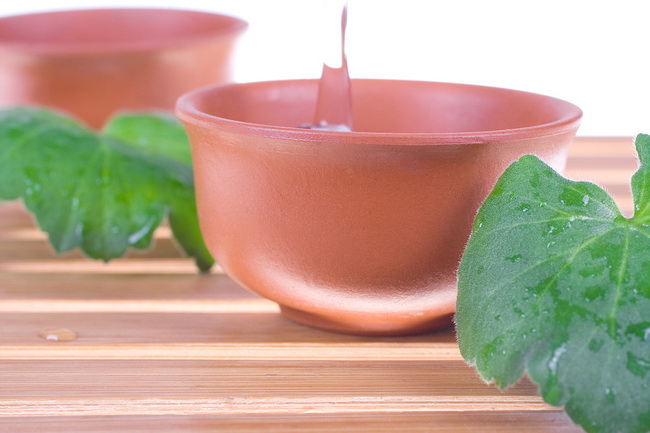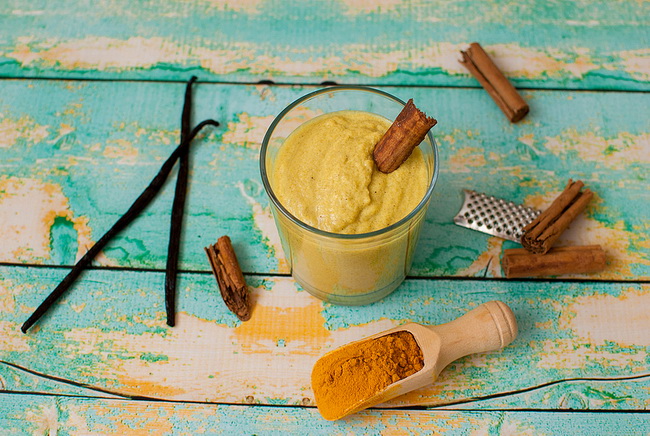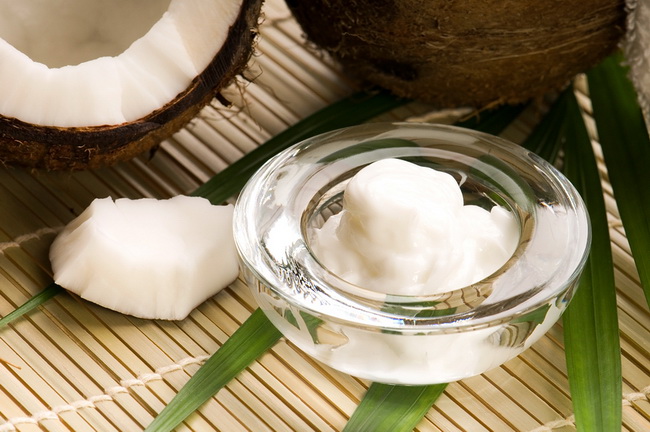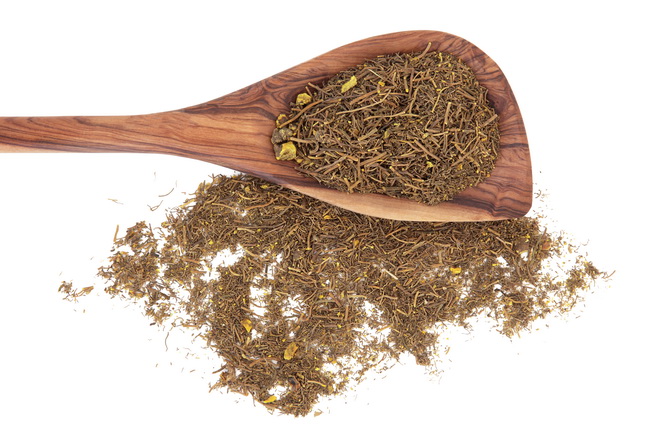- Make It Yourself Lavender Heart-Shaped Bath Bombs!
- 20 Things You Never Knew About “Down There”
- 12 Best Foods For Those Suffering From Arthritis Pain
- 12 Personal Hygiene Mistakes Almost Everyone Makes (Mom Never Told You About #4!)
- 15 Medicinal Plants And Herbs From The Cherokee People
- 12 Mind-Blowing Benefits Of Drinking Coconut Water During Pregnancy
- 12 Outstanding Winter Foods That Won’t Fatten You Up Like A Christmas Turkey
12 Natural Ways to Treat a Staph Infection (#11 is Crazy!)

Photo credit: bigstock.com
These are words no one wants to hear “You have a staph infection.” Staph infections come from a type of bacteria called staphylococcus and they are nasty infections to try to fight. Staph infections generally affect the skin and gain entrance through a cut, serious burn, or other type of skin lesion.
This bacteria causes skin infections with ugly names such as impetigo, boils, and cellulitis. This is the same type of bacteria that causes food poisoning.
Staph infections are high infectious and can attack anyone, but some of us are more susceptible than others including diabetics, new mothers, those with chronic diseases, babies, and persons with weakened immune system. This type of infection can be easily spread through skin to skin contact. You can also spread this on your own body by touching the infected area, then touching another part of your body!
Staph infections are nothing to take lightly and they can progress to a serious condition that is much more invasive. Please consult with your doctor first for proper diagnosis and treatment.
In addition to your doctor’s treatment, we have made a list of 12 of the best home remedies that can also be helpful additions to traditional treatments. These natural remedies will promote quick healing, prevent further progression of the disease, and eases those painful symptoms.
Keep reading so you find out which natural remedies will help to heal that infection quickly and make you feel better as well!
1. Witch Hazel
This old fashioned remedy is great way to wash the infected area. It will reduce the pain and inflammation that often comes with a staph infection. Mix equal parts of witch hazel and water and spray the affected area liberally. Allow to air dry before reapplying a clean bandage.
2. Tea Tree Oil
Tea tree oil has powerful antimicrobial and anti-inflammatory compounds that can be very effective when it comes to treating staph infections. It can also relieve some of the discomfort that comes with these types of infection. The American Journal of Infection Control published a study in 2004 which found that tea tree oil was an effective antimicrobial agent for treating staphylococcus aureus. To use, put 2 or 3 drops of tea tree essential oil on a slightly moistened cotton ball and dab on the infected area. Allow to dry for several hours before rinsing off. Repeat two to three times each day for speedy healing.
3. Apple Cider Vinegar
This natural substance is also full of antimicrobial compounds. Make a super healing solution by mixing equal parts of apple cider vinegar and water and spraying the affected area twice each day. Allow to air dry before applying a clean bandage.
Continue to Page 2

Photo credit: bigstock.com
4. Turmeric
This super healthy spice has powerful antibacterial, anti-inflammatory, and antioxidant compounds that will help to fight this infection quickly. It improves your immune system so that your body will also attack and kill off this infection more easily. Use turmeric both internally and externally for best results. Sprinkle turmeric powder on the wound two or three times each day to speed healing and for relief of painful symptoms. Then add 1 teaspoon of turmeric powder to one cup of warm milk and drink twice a day to encourage healing from the inside. You can also try turmeric supplements after consulting with your doctor for the proper dosage.
5. Eucalyptus Oil
Chances are good that you have already used eucalyptus oil in cough syrups, decongestants, and mouthwashes to help kill germs and speed healing. Eucalyptus oil has anti-inflammatory and antimicrobial compounds that are very effective when fighting almost all types of bacteria, including staphylococcus. It is so powerful that eucalyptus oil works against antibiotic resistant types of bacteria! Dilute three drops of eucalyptus oil in one tablespoon of olive oil, coconut oil or almond oil, and then apply this directly on the affected area. Allow it to work for two or three hours before washing off. Repeat two or three times each day.
6. Garlic Oil
This herb makes every list, doesn’t it? It seems as if there is nothing garlic cannot do! Garlic is a natural antibiotic that is very effective against staph infections while it can ease the discomfort and pain that comes with these types of infections. You can put garlic oil directly on the affected area twice each day. Garlic is also good for the immune system so slightly crush two cloves of organic garlic and swallow them daily. You can also add more fresh garlic to your meals.
Continue to Page 3

Photo credit: bigstock.com
7. Coconut Oil
This unique oil has powerful anti-inflammatory and antibacterial compounds that kill bacteria quickly and can provide some relief from the discomfort of infections. Gently rub some slightly warm coconut oil directly on the affected areas so that it penetrates the infection. Allow it to work for two or three hours, wash off and repeat. Do this several times each day. You can also add two tablespoons of virgin coconut oil to your cooking to boost your immune system as well.
8. Oregano Oil
This is another powerful oil that can be used to treat staph infections. The Journal of Medical Microbiology published a study in 2007 which showed that oregano oil was very effective in killing staphylococcus aureus and staphylococcus epidermidis. This oil is very potent so you will need to dilute it. Add 8 drops of oregano oil into 2 tablespoon of olive oil, almond oil, or grapeseed oil and apply it to the affected area. Allow it to work for two or three hours, then wash it off. Reapply two or more times each day. You can also mix 5 drops of oregano oil in a glass of fruit or vegetable juice and drink twice each day for 7 to 10 days.
Please note that pregnant women should avoid oregano oil.
9. Echinacea
Echinacea is well-known for improving the immune system as well as containing anti-inflammatory and antimicrobial compounds. That makes this herb a great way to fight infection while easing the symptoms of this painful infection. The journal Phytomedicine published a study in 2010 which showed that a standardized Echinacea preparation effectively controlled symptoms that accompanied bacterial respiratory infections. You can apply a cream or ointment that contains Echinacea two or three times each day to the affected area. You can also consume two or three cups of Echinacea tea each day to strengthen the immune system.
Please note that if you have an autoimmune disorder you should never consume Echinacea.
Continue to Page 4

Photo credit: bigstock.com
10. Goldenseal
This ancient herb has been used by Native Americans to fight infections for hundreds of years. Science backs up claims that this herb has antiseptic and antibacterial compounds that can disinfect and heal wounds. Make a double strength goldenseal tea and apply this to the affected area using a clean cotton ball. Repeat two or three times each day to fight the infection and speed healing.
11. Manuka Honey
Well, this is a sweet way to deal with an infection! Although all types of honey contain antibacterial compounds, Manuka honey, which is a certain type of honey from New Zealand, is head and shoulders above the rest. One study, published in the Journal of Applied Microbiology in 2002, showed that the powerful phytochemicals in Manuka honey not only killed staph bacteria, but it prevented the further growth of this source of infection, inhibiting it from spreading. You should be able to find Manuka honey in your local health food store or buy it online. Apply Manuka honey directly to the affected area and allow it to work for two or three hours before washing it off. Repeat two or three times each day for 7 to 10 days. Of course, you can always add some of this super delish honey to your herbal teas or oatmeal for a boost of immune strengthening power.
SEE ALSO: 12 Natural Antibiotics: No Prescription Required!
12. Basil
Basil also has strong immune boosting compounds as well as containing antimicrobial properties. If you have fresh basil, you can apply the juice from the leaves directly to the affected area or apply basil oil to the infected areas. Allow to work for two hours, and then wash off and repeat two or three times each day. You can also drink basil tea two or three times each day to help fight the infection from the inside out and improve your immune system at the same time.
Extra Tips
- Avoid touching the affected areas directly as this can spread the bacteria as well as delay the healing process
- Practice a high level of hygiene to prevent the bacteria from spreading
- Always wash your hands before eating
- Keep uninfected wounds covered
- Avoid sharing personal items such as towels to avoid spreading the infection
- Wash clothing, towels, and bedding in hot water and dry in direct sunlight to kill any bacteria that might be sticking to these items
References:





























